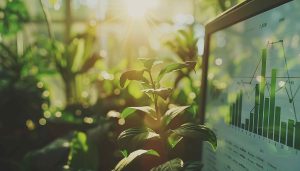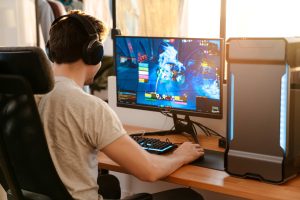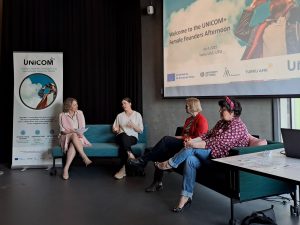Yhä useampi nuori Suomessa kokee yksinäisyyttä, ulkopuolisuutta ja eristäytyneisyyttä. Tähän ongelmaan pyritään puuttumaan NOPPA-hankkeella, jossa osallisuutta lisätään pelillistämisen avulla. …
Tekijät | Authors
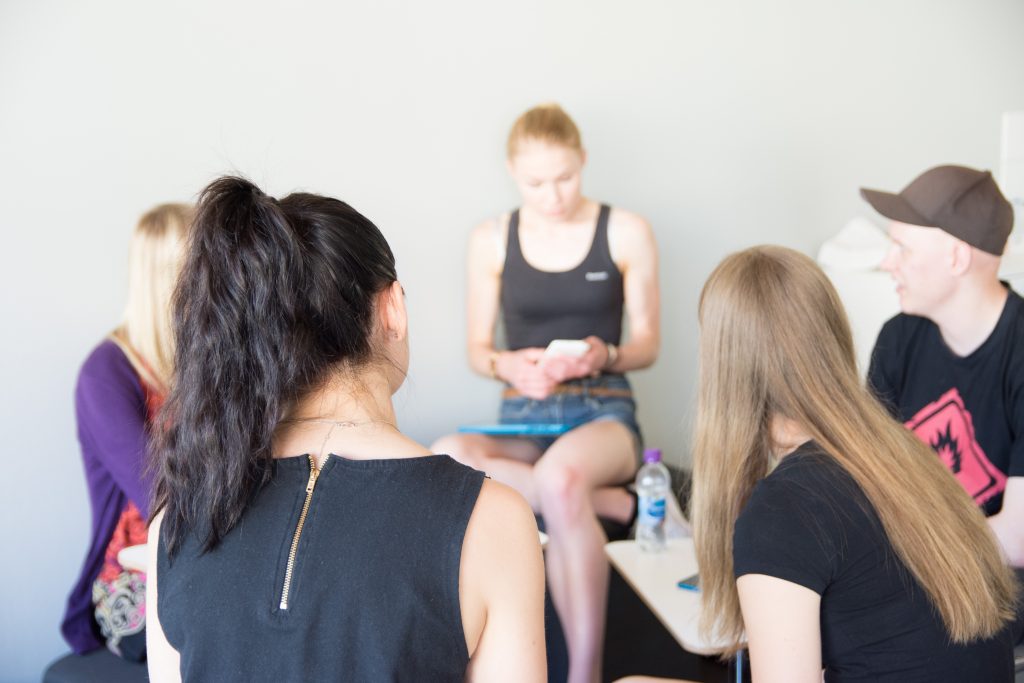
Problem-based project learning is key to the circular economy
The circular economy (CE) is a new economic model based on the sustainable use of resources. It aims to minimize waste by producing materials and products that can be circulated and are made to last. (Sitra 2014.) The transition to the circular economy calls for changes in our thought patterns and paradigms. New business models, the sharing economy and co-creation are key elements of the CE.
According to a report published by Sitra in 2014, the CE offers the Finnish economy an annual growth potential of 1.5 to 2.5 billion euros. However, to take advantage of this great potential, we need new-generation experts in the CE. The possibilities of the CE have been noted at Turku University of Applied Sciences, and the circular economy has been made a key item of the new strategy (Turku University of Applied Sciences 2016).
Discussions regarding the teaching of circular economy raise questions about the content of teaching. What models of thought do students at higher education institutions need to become CE professionals? The transition to the CE requires the borders between disciplines to be lowered. It also calls for interdisciplinary systemic thinking. Another question regards the context of CE instruction. (Heinrich 2016.) Some education professionals believe that the methods of learning are just as important as the facts learned (Vare & Scott 2007). What we need is a new kind of learning that encourages critical, systemic thinking and supports the development of future CE experts.
What, then, might a learning environment based on the same principles as the circular economy look like? Are the present learning environments “linear” and outdated, making them poorly suited to the future economy? (Heinrich 2016.) The different elements of a learning environment for the circular economy have also been examined at Turku University of Applied Sciences (Figure 1), where efforts to set up a project learning environment (PLE) for the circular economy were launched in 2015. The development of the PLE was based on Innopeda®, a new learning approach developed at Turku University of Applied Sciences. This article describes the new learning environment, which takes into account different factors affecting learning. The circular economy PLE is called Circular Economy 2.0.
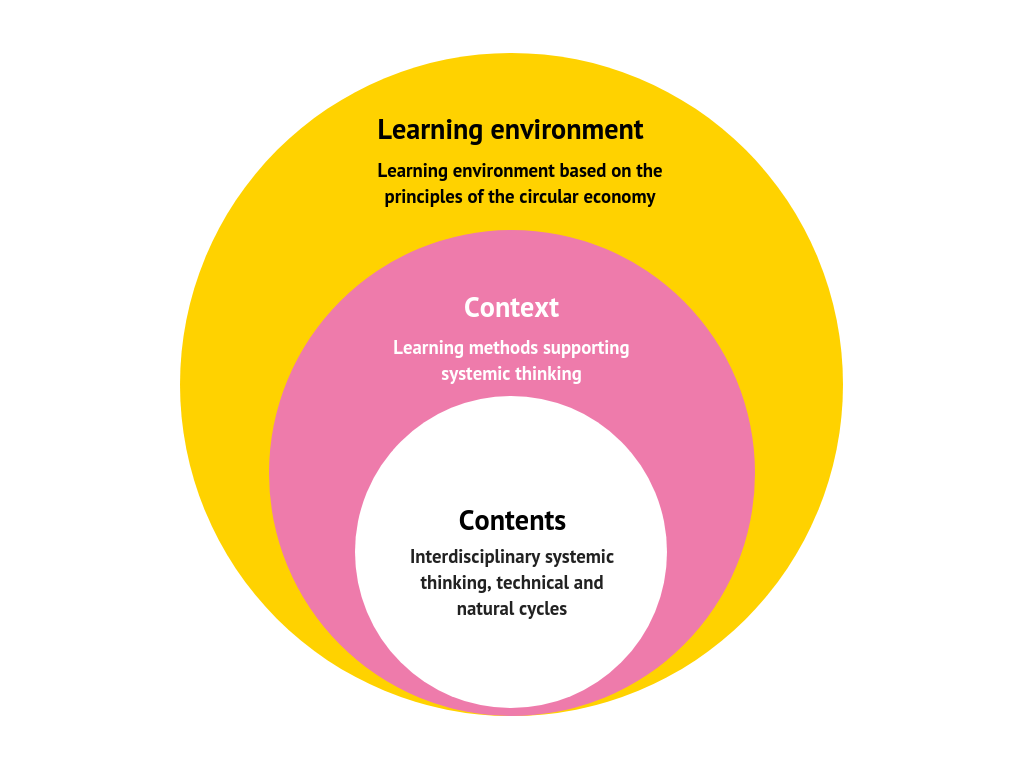
Figure 1. The relationship between different elements of the circular economy learning environment.
Skills and knowledge of a circular economy expert
For the circular economy to succeed, it needs shared expertise and the application of knowledge, as well as multidisciplinary dialogue (Lundgren 2012). Experts are needed from various fields, such as material technology, business, design and ICT. It is difficult to pinpoint a field that the CE would not be linked to. The expertise generated by the circular economy PLE is based on an understanding of technical and natural cycles and interdisciplinary systemic thinking. In the learning environment, students are encouraged to examine problems from various perspectives, as complex processes leading to change rarely have a single correct solution (De Wolf 2016).
Circular Economy 2.0 comprises students from different fields, who obtain the basics in circular economy through the CE module (15 cr) offered by Turku University of Applied Sciences or through other corresponding studies. The module is open to all students and serves as a path to the circular economy learning environment. It introduces students to natural and technical cycles and to systemic thinking through workplace-based projects. Most of the studies are carried out in teams working on commissions from workplaces and companies.
Having learned the basics of the CE, students can begin to develop their personal expertise in the learning environment, drawing on their special skills and strengths. Throughout the learning process, students assess the development of their own competence and that of others. The areas of competence assessed include:
- Participation in a multidisciplinary team
- Application of knowledge learned from others
- Adoption of a customer-driven approach
- Behaviour in situations involving presentation, performance and interaction
- Ability to work independently, making use of outside networks and resources
- Basic project management skills
Problem-based project learning
The circular economy needs support from new didactic perspectives. Webster and Johnson (2008) have described learning in the field of CE as a cycle in which concrete experiences and the testing of new ideas lead to a continuous loop of learning. They criticize the prevailing model of education, comparing it to a linear production process where resources only flow in one direction (Webster & Johnson 2008).
In practice, this form of cyclical learning can be carried out through, for example, problem-based projects. Circular Economy 2.0 is in active contact with local workplaces and employers to seek research or development challenges related to the circular economy for the students to carry out. Project work is typically independent, collaborative, workplace-driven and comprehensive, spanning disciplinary boundaries (Kanerva-Lehto & Lehtonen 2007). Depending on the needs of each project, work can be supported by various teaching methods, such as short brainstorming sessions or 24-hour innovation camps.
During short brainstorming sessions, the commissioner “throws” the development challenge to a small team of students who chew it over for a few hours. This may result in, say, 100 new ideas. At innovation camps, several multidisciplinary teams work on the challenge for 24 hours, each of them aiming to come up with the best idea. In teams, students get to share their expertise and examine challenges from many different perspectives.
Student managing director heads the learning environment team
The learning environment functions as a team of students, guided by research and development experts and teachers from Turku University of Applied Sciences. In its present form, Circular Economy 2.0 comprises 10–15 students, who are recruited to the team for a longer period of time. To date, the project learning environment has involved students from fields such as energy and environmental technology, design, sustainable development, sales, international business, health and culture. Several exchange students from, for example Russia, Austria, China and Nepal have also taken part in the activities.
The participating students initially receive credits for their work, but those who have been involved longer in the activities may be paid for their work as student assistants. Each student is assigned tasks corresponding to their competence and interests. The work is carried out independently or in groups. A student managing director who coordinates the overall set of projects as well as coordinators specialized in various themes are selected from among the students who have been involved longer in the activities (Figure 2). Teachers play the role of supervisors and enablers in the learning environment. The focus of activities is on the active and self-directed work of students. The learnings from projects are shared at regularly held meetings.

Figure 2. The roles in the circular economy learning environment.
The students work both remotely and in the physical facilities of Circular Economy 2.0 on the Sepänkatu Campus of Turku University of Applied Sciences. Soon the PLE is moving to Lemminkäisenkatu Campus of TUAS. Although virtuality and various digital platforms enable location-independent learning, authentic meetings and collaboration play a unique role in terms of the students’ development, team building and generation of new innovations. The idea is that the users give the space a personal touch and adapt it to their own needs.
Workplace-driven learning environment
The objective of Circular Economy 2.0 is to be an R&D partner of companies in the field. Turku University of Applied Sciences has a large professional network, which it has built systematically with companies in the environmental sector. TUAS offers its workplace partners the innovation potential of future circular economy experts, that is, of its students from different fields, for a separately determined fee. Most of the partners are small companies that have limited R&D resources to develop their operations. The circular economy is still a relatively unfamiliar concept to many companies, and students can offer fresh views on, for example, the development of closed-loop concepts. One of the goals is to achieve greater regional impact by boosting the circular economy competence and business potential insight of corporate partners.
One example of a successful project is the co-operation carried out with a company specialized in vehicle recycling and towing services. Among other things, this co-operation involved an investigation into the opportunities provided by the circular economy in 2015. In the project, six students of Turku University of Applied Sciences examined the material flows of the vehicle disassembly process, looked into new recycling opportunities and identified the bottlenecks involved in the process. All the information obtained helped the company develop its process. The students, in turn, got extensively acquainted with the field and gained experience from the disassembly and waste sector. Moreover, the project called for extensive networking, a good command of research methods and communicative skills. The company was satisfied with the results, and the activities grew into deeper co-operation in 2016.
The goal is to provide a clear picture of the PLE to partner companies. One way to do this is to productize the research and development services offered by students, in collaboration with other higher education institutions in the area. Development work is an independent process that calls for enough time and co-operation. The significance of co-operation cannot be over emphasized. The overall result can come into being and develop only in continuous interaction with interest groups. The circular economy PLE benefits various parties in the region and manifests our common way of acting.
References
De Wolf, M. 2016. ThreeC: Creating competencies for a circular economy. Haettu 25.10.2016 osoitteesta http://circulatenews.org/2016/06/threec-creating-competencies-for-a-circular-economy/
Heinrich, S. 2016. Learning not just about but for a circular economy. Haettu 25.10.2016 osoitteesta http://circulatenews.org/2016/05/learning-not-just-about-but-for-a-circular-economy/
Kanerva-Lehto, H. & Lehtonen, J. 2007. Tutkimuspaja – oppimista ja kehittämistä.
Lundgren, K. 2012. Ympäristöosaajat 2025. Tulevaisuuden osaamistarpeet ympäristöaloille. Haettu 25.10.2016 osoitteesta https://www.utu.fi/fi/yksikot/ffrc/tutkimus/hankearkisto/kansallinen-ymparisto/Documents/Ymparistoosaaja2025.pdf
Sitra 2014. Kiertotalouden mahdollisuudet Suomelle. Sitran selvityksiä 84. Haettu 25.10.2016 osoitteesta http://www.sitra.fi/julkaisut/Selvityksi%C3%A4-sarja/Selvityksia84.pdf
Turun ammattikorkeakoulu 2016. Turun ammattikorkeakoulun strategia. Haettu 25.10.2016. osoitteesta www.turkuamk.fi > Turun AMK > Tunne meidät > Strategia.
Vare, P. & Scott, W. 2007. Learning for change. Exploring the Relationship Between Education and Sustainable Development. Haettu 25.10.2016 osoitteesta http://www.bath.ac.uk/cree/resources/LEARNING_FOR_A_CHANGE_xJESDx.pdf
Webster, K. & Johson, C. 2008. Sense and sustainability. Educating for circular economy. Haettu 25.10.2016 osoitteesta http://www.c2c-centre.com/library-item/sense-and-sustainability
This article was previously published here: https://uasjournal.fi/koulutus-oppiminen/ongelmalahtoinen-projektioppiminen-on-avain-kiertotalouteen/



